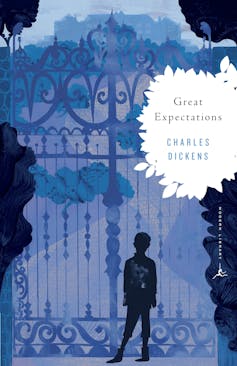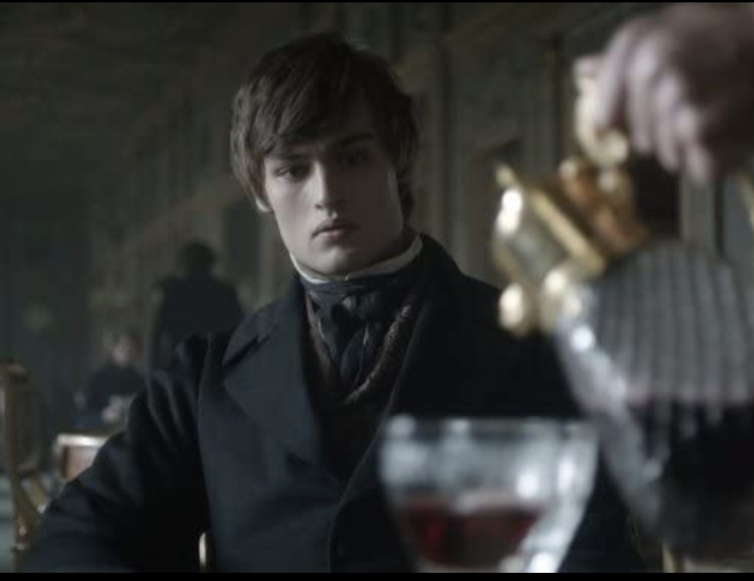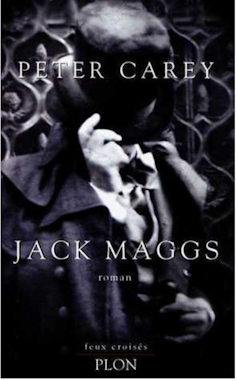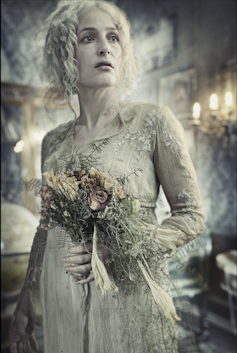
In our Guide to the classics series, experts explain key works of literature.
In Charles Dickens’ Great Expectations (1861), everything is connected. As plots and subplots converge and hidden relations are revealed, the novel elaborates a view of society in which no individual may be considered the master of his or her own fortunes – or “expectations” in the old-fashioned sense, meaning one’s future prospects.
Great Expectations blends literary styles and genres too. It fuses elements of the gothic with comic satire, realism, fairytale, crime fiction and melodrama. It can even be read as autobiographical, insofar as Dickens drew on aspects of his upbringing when depicting the deprived childhood of the young orphan Pip, the novel’s protagonist and narrator.

Though it is a myth he was paid by the word, Dickens is often accused of wordiness. Great Expectations is, however, one of his more compact novels, notwithstanding its complex plotting. His other first-person novel, David Copperfield (1849), is twice as long, with a far larger cast of characters.
The reclusive corpse-bride Miss Havisham is Great Expectations’ best-known figure. Miss Havisham stopped the clocks on the day she was jilted by her fiancé and still dresses in her old wedding gown. She lives shut up in a rotting mansion, where she trains her beautiful ward Estella to enact her revenge upon men.
The muscles in Miss Havisham’s thin arm swell with “vehemence” when she draws Pip close and commands him to love Estella, repeating the words “love her, love her, love her” until they sound “like a curse”.
Pip’s motivations are mixed. He confides in his childhood friend Biddy that Estella has made him feel “coarse and common”, adding “I admire her dreadfully and I want to be a gentleman on her account.” After a pause, Biddy asks, “Do you want to be a gentleman, to spite her or to gain her over?”
Pip is stumped, but his wish comes true when he is plucked from his low station as a blacksmith’s apprentice to be educated as a “London gentleman” by a mysterious benefactor.
Read more: Charles Dickens and the push for literacy in Victorian Britain
More real than reality
G.K. Chesterton wrote that Dickens was “always most accurate when he was most fantastic”. For the painter and Dickens fan Vincent Van Gogh, the novelist’s “strangely vivid” prose exemplified how fiction can seem “more real than reality”. Great Expectations delivers its social observations in a heightened, hybrid style that can only be called “Dickensian”.
The novel’s use of first-person narration also affords greater psychological depth than may be found in some earlier Dickens novels, where the emphasis tends to be on human variety more than human complexity. The gap between Pip’s youthful impressions and his mature judgement can be especially revealing. It sometimes highlights the unreliability of memory; at other times, it conjures past events with an immersive intensity that illustrates their hold upon the present.
The novel’s imagery and the characters’ motivations often make it difficult to separate past and present, life and death, dream and reality, conscious and unconscious, black and white — even love and hate.
But the first-person narration ensures that Dickens’ wordy descriptions are never gratuitous. The details Pip notices all contribute to our understanding of his state of mind. Complex patterns of imagery imbue seemingly trivial details with larger symbolic significance.
It might seem inconsequential that Wemmick, the lawyer’s clerk, has “glittering eyes, small, keen, and black”. But it deepens the impression of a pervasive blackness in the world Pip inhabits.
There is the “black Hulk” of a prison ship beyond the “black” Kent marshes. Pip blackens his hands at the blacksmith’s forge. There is the “great black dome of Saint Paul’s” in London and the “deadly black horsehair” of the lawyer Jaggers’s coffin-like chair.
The cold-blooded Jaggers serves as an intermediary between society’s lowest and uppermost orders, but his wealth derives primarily from a criminal underclass. The death masks of hanged former clients gaze down from his shelves. Jaggers allows Pip to believe that Miss Havisham is his secret benefactor. But in the most important of the novel’s many twists, Pip discovers that his sponsor is the “wretched” convict Magwitch, who has grown rich in New South Wales.
As a boy, Pip first encounters Magwitch as “a man started up from among the graves” on the Kent marshes. The escaped convict demands that the terrified child provide him with food and a file.
Magwitch is captured and transported for forgery, but he returns from his live burial down under as “a voice from the darkness beneath”. He risks death to come back and admire the gentleman he has “made”. When Magwitch tells Pip, “I lived rough, that you should live smooth”, his words evoke the structural dependence of the British ruling classes on the exploitation of oppressed groups at home and abroad.

Read more: Friday essay: from grotesques to frumps – a field guide to spinsters in English fiction
An exposé of prejudice
Great Expectations is sometimes described as a Bildungsroman – literally a “novel of formation”, a coming of age story. But the story of Pip’s rise from humble origins to genteel affluence also brings into focus how class identity is formed. It exposes the material underpinnings of elevated social status. In turn, it exposes the arbitrariness of class prejudice.

At his forgery trial, Magwitch is made to feel like a “dunghill dog” when he sees how the system gives preferential treatment to his co-accused, Compeyson, thanks to the latter’s fine clothes and genteel deportment.
In “making a gentleman” of Pip, Magwitch hopes to infiltrate the ruling class and vicariously beat them at their own game. Pip recoils from his connection to Magwitch, which he believes bars him forever from courting Estella. This proves ironic when Estella’s own uncouth origins are revealed.
The novel links the convict stain to race, evoking the dispossession and exploitation of racially othered peoples in both Australia and America. As Magwitch tells Pip his Australian story, the smoke of the “Negro-head” tobacco in his “black pipe” threatens to “perplex the thread” of his tale.
References to Magwitch’s blackness and “savagery” evoke the racist discourse that served to legitimate white settlement in Australia. Magwitch also speaks of Compeyson having “made me his black slave”. His description of convict life is reminiscent of Dickens’ critique of U.S. slavery in his American Notes (1842) and in his novel Martin Chuzzlewit (1844).
Pip, in turn, feels “enslaved” by his dependency on Magwitch. Yet his crippling burden of guilt and debt has more to do with class and colonial entanglements than individual obligation. He comes to see himself not as a free agent, but a mere beam in a “vast engine”. He longs to have “the engine stopped, and [his] part in it hammered off.”

Dickens’ exposé of the intersections of race, class and colonialism remains limited. Edward Said noted that Pip’s dependence on the colonies, meaning Australia, is transferred to “the East” with a convenient lack of specificity. An 11-year period is covered in just two sentences.
The novel’s depiction of Australia has inspired postcolonial rewritings, notably from the Australian novelist Peter Carey, whose Jack Maggs (1997) takes Dickens to task for failing to envisage the possibility that Magwitch might have forged a meaningful life in New South Wales.
Nonetheless, Dickens promoted emigration to Australia, through the Urania Cottage project aimed at rehabilitating “fallen women”. His sons Alfred and Edward emigrated to Australia at their father’s urging.
Read more: Charles Dickens: 150 years on, debate still rages over his 'misogynist' label
Representations of women
Great Expectations’ representation of women has divided readers. Some critics see Pip as a masochist, whose brutal upbringing by a much older sister, who boasts of raising him “by hand”, leads him to associate a woman’s love with cruelty. Hence his predilection for the cold, mocking Estella over the caring Biddy.
The novel links its depiction of gender to its depictions of race and class. Pip’s sister, Mrs. Joe, calls herself a “negress slave”; Estella has a working-class “gypsy” mother.

Pip’s interactions with Miss Havisham also carry a claustrophobic sexual charge, which has been played up or down in the book’s many screen adaptations. The punishments meted out to these women as the plot unfolds have been read as symbolic expressions of Pip’s repressed violent urges against women.
It is the blacksmith Joe who exhibits more traditional maternal qualities. He displays a tender affection for Pip. That Joe can seem childlike in relation to the better-educated boy provides some of the novel’s gentlest comic relief. When Pip tries to teach him to read, Joe proves a slow but enthusiastic pupil:
when you do come to a J and a O, and says you, “Here, at last, is a J-O, Joe,” how interesting reading is!
The pleasures of reading Great Expectations are somewhat more complicated. The novel affirms the sentimental ideal of Victorian domesticity that Dickens’s earlier novels had been instrumental in shaping. The marriage of Joe and Biddy is followed by the birth of their son, named in Pip’s honour, in whom Pip sees “myself again”.
But Pip’s romantic fate remains uncertain. The ending of Great Expectations does not satisfy readerly “expectations” of a romantic union between Pip and Estella.
Dickens did, however, revise his bleak original ending to keep the possibility of such a union open, if only as a faint shadow, taking the advice of fellow novelist Edward Bulwer-Lytton.
The result is an ambiguous, thought-provoking final chapter that makes far more “interesting reading” than any neater conclusion would have provided, befitting an unsettling text that retains its haunting power more than 150 years on.
Sascha Morrell does not work for, consult, own shares in or receive funding from any company or organisation that would benefit from this article, and has disclosed no relevant affiliations beyond their academic appointment.
This article was originally published on The Conversation. Read the original article.







